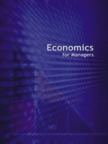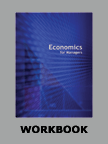P&G's Success Story in China
|
|
ICMR HOME | Case Studies Collection
Case Details:
Case Code : BSTR194
Case Length : 16 Pages
Pages Period : 1998-2005
Organization : P&G
Pub Date : 2006
Teaching Note :Not Available
Countries : China
Industry : FMCG
To download P&G's Success Story in China case study (Case Code: BSTR194) click on the button below, and select the case from the list of available cases:

OR

Buy With PayPal
|
Price:
For delivery in electronic format: Rs. 400;
For delivery through courier (within India): Rs. 400 + Shipping & Handling Charges extra
» Business Strategy Case Studies
» Case Studies Collection
» Business Strategy Short Case Studies
» View Detailed Pricing Info
» How To Order This Case
» Business Case Studies
» Case Studies by Area
» Case Studies by Industry
» Case Studies by Company
Please note:
This case study was compiled from published sources, and is intended to be used as a basis for class discussion. It is not intended to illustrate either effective or ineffective handling of a management situation. Nor is it a primary information source.
Chat with us

Please leave your feedback

|
|




<< Previous
EXCERPTS Contd...
Brand Stretching
Brand stretching was another strategy adopted by P&G in China. This strategy had a considerable risk element. If the strategy failed, it could potentially damage the brand name and sales of the original brand.
|
To avoid cannibalization while stretching a brand, P&G conducted extensive
studies to understand the preferences of different groups of consumers so as to
develop a distinctive product that could also be differentiated at the point of
sale. After careful deliberations, eight years after the Chinese launch of P&G's
Crest toothpaste, it launched 'New Crest' toothpaste in 2004, with a price 30
percent lower than that of its premium product and on par with its competitor -
Colgate's middle-market toothpaste. At the time of the launch of this product,
Crest was a premium brand in China and by 2000, Crest held about 55% market
share of the up-market segment. About 70% of the total toothpaste market consisted of middle and lower-end segments...
|

|
The HR Strategies
P&G's HR strategy focused on superior recruiting and retention of its employees. In its initial years in China, P&G brought in experienced Americans to manage the country's operations. The company also hired Chinese at that time but gave them a set plan to follow. It trained these locals to think the American way.
With time, the locals gained experience and were absorbed into senior positions. P&G believed in promoting from within the organization and so the company recruited people who were starting their career or had little work experience. P&G was among the first multinationals to conduct campus placements in reputed Chinese universities and had gained strong awareness among university students. It provided world-class training programs to build general business skills as well as core functional skills. Achievers were also given overseas assignments. In May 2005, P&G employed 4,000 people in China, out of which only about 50 were not Chinese...
|
|
The Challenges
Though P&G's Chinese operations were highly successful, the company faced challenges in the form of fierce competition from local Chinese manufacturers and the presence of fake products. P&G faced stiff competition from local companies such as the Nice group (that manufactured detergents) and C-Bons (a national shampoo and skin care products company). To avoid direct competition from global FMCG companies such as P&G, these local companies had concentrated on lower segment consumers and had emerged as leaders in this segment...
Exhibits
Exhibit I: Break-Up of P&G's Revenues from the Emerging Markets (2002)
Exhibit II: Financial Details of P&G
Exhibit III: P&G's Revenues in Greater China
Exhibit IV: Changing Habits of the Chinese Consumer
Exhibit V: Distribution of Urban and Rural Population in China
Exhibit VI: Classification of Towns and Cities Among Different Chinese Geographical Regions
|










